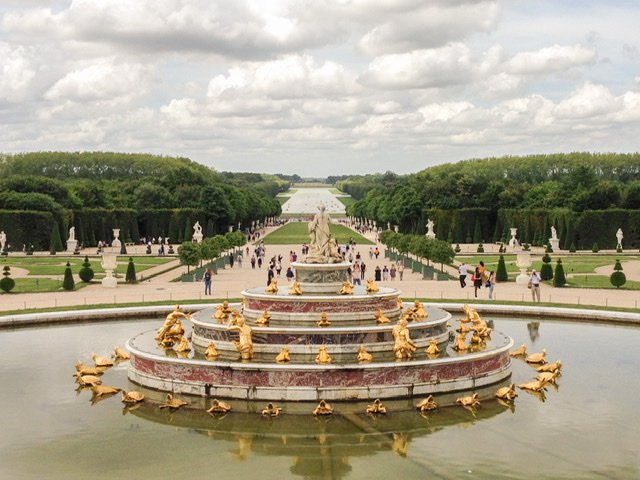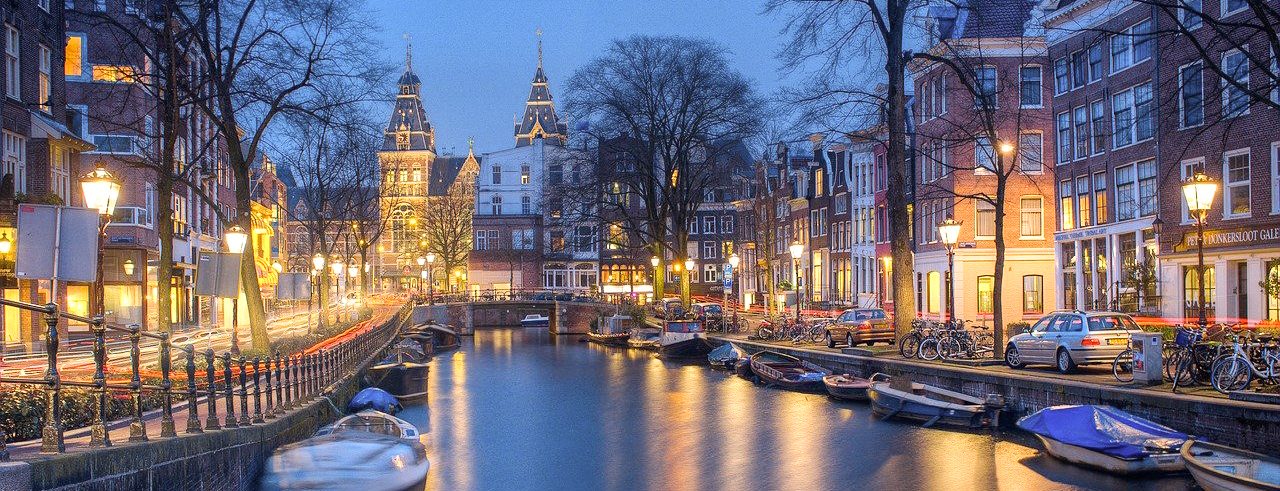More Than a Palace: The Magnificent Estate of Versailles
Updated 6/21/25
This post may contain affiliate links. If you make a purchase through these links, we will earn a small commission at no extra cost to you. For more information, please check our privacy policy. Thanks!
Way back in 2005, I visited Paris with my daughter Stephanie, and one of our standout adventures was a tour of the Palace of Versailles.
We marveled at the over-the-top elegance, especially in the Hall of Mirrors with its 357 mirrors (can you imagine being the poor soul who had to clean those?) It’s hard to believe this phenomenal place began as a simple hunting lodge for King Louis XIII in 1623.
Thanks to the efforts of Louis XIV four decades later, we had the start of the estate we see today.

Our guide dished out some unforgettable tidbits, like how people once used palace corners as restrooms, and how Marie Antoinette gave birth in front of an audience. Can you imagine?

Then we strolled through the palace gardens, soaking in the manicured beauty, before returning to Paris.
I came away awed by the opulence and overwhelmed by the crowds. At the time, I had no idea I’d only seen a sliver of the Estate of Versailles’s 800 hectares (or nearly 2,000 acres.)
The full estate includes not just the palace and formal gardens, but also a sprawling park and the Trianon Estate. It even stretches into town, encompassing buildings like the Hôtel de Ville (City Hall) and the Théâtre Montansier.

A Second Look at Versailles
Flash forward thirteen years to 2018. Steve and I spent a month in Paris. We visited Versailles on a gloomy June day, joining a bicycle tour for which I was thoroughly unprepared for the cold and drizzle.
As we entered the grounds, I was shocked to see sheep! I then realized that there is much more to Versailles than I knew.

We rode to the Trianon Estate, viewed several gardens, and enjoyed lunch on the patio at La Flottille.

At the end of our bicycle tour, we visited the palace. It was just as glorious as I remembered, and it left a lasting impression on Steve. Every time we have visited a palace or grand home since then he says, “It’s not Versailles.” Indeed, not too many places can match the grandeur and mystique of this amazing building.
A Third Visit to Versailles
Our tour through the palace during our bicycle tour had been rushed, so we decided to go back on our own another day.
After braving the palace crowds once more, we spent the rest of the day wandering the vast grounds. And even after two full days, it felt like there was still more to discover.
One day, we hope to return to the town of Versailles for a longer stay, this time with enough days to properly roam the estate, get lost on purpose, and maybe even find a quiet corner that Louis XIV missed.

Beyond the Palace: The Trianon Estate
This section of the estate consists of three areas: The Grand Trianon, The Petit Trianon, and The Queen’s Hamlet.
The Grand Trianon
This chateau of pink marble and a type of rock called porphyry is located in the northwest corner of the estate. It was built in 1687 at the request of Louis XIV as a place to escape the structures of life in the Palace of Versailles and spend time with his favorite mistress,Marquise de Montespan.
The chateau has two wings. Each housed a royal apartment. They are connected by a colonnade called The Peristyle.

The furnishings were lost during the French Revolution. They were replaced during the rule of Napoleon Bonaparte. Those are mostly what you will see today.
This page on the en.chateauversailles.fr website is full of fascinating information about this chateau.
The Trianon Treaty was signed here on June 4, 1920. The treaty formally ended World War I between most of the Allies of World War I and the Kingdom of Hungary. The result was that Hungary lost 70% of its land and all of its seaports.
The treaty remains a source of sorrow and anger for Hungarians a century later. Learn more about that in the article “Hungary: Why is the Trianon Treaty So Controversial?” from Kafkadesk.
From 1963 to 1966, the Grand Trianon was restored for use by President Charles de Gaulle.
The Petit Trianon
In the mid-1700s King Louis XV decided to build a chateau in the middle of his gardens. The three-story neoclassical building was completed in 1768. When Louis XV died in 1774, Louis XVI ascended the throne. He gifted the Petit Trianon to his wife, Marie-Antoinette.

The young queen used the Petit Trianon to escape the formality and demands of royal life. It is reported that she was in the garden in October of 1789 when she was told of the armed crowd that would force the royal family to Paris during the early part of the French Revolution.
During the revolution, the building was used as a hostel and a tavern, causing it to fall into disrepair. During this time, the furniture, artwork, and other valuables were auctioned off.
The building was restored by Napoleon I to be used by his sister and by Empress Marie-Louise.
Learn more about The Petit Trianon here.
The Queen’s Hamlet
In 1783, a century after the Grand Trianon chateau was built, Louis XVI added the Queen’s Hamlet (Hameau de la Reine) to the Trianon Estate.
It was a collection of small, rustic buildings that formed a crescent around an artificial lake. It included a working farm that was used for the royal children’s education.

The buildings were not built for longevity and suffered from the weather during the French Revolution. From 1810-1812 Napoleon had most of them restored. A few were beyond repair and were demolished.
The hamlet underwent various restoration projects in the 20th century as well. One done in the 1930s was made possible by a donation from John D. Rockefeller.
In 2006, the farm was reconstructed and is currently home to many animals which are looked after by the Foundation for Animal Welfare.
Here is more information about this wonderful hamlet.
And There is Even More!
Did you know that the gardens on the estate boast over 200 sculptures (there are 386 in all of the estate,) making it one of the largest open-air sculpture museums in the world?
The Orangery features orange, lemon, pomegranate, palm, and oleander trees, some more than 200 years old. They are housed in the Orangery during the winter and displayed outside in the summer.
There are also groves, which are like little parks in the woods, numerous fountains, and pathways.

As if that weren’t enough, you can visit the Gallery of Coaches in the Great Stables and marvel at the intricacies of the horse-drawn carriages of the past.
Helpful Information
You can expect crowds whenever you visit Versailles, this place isn’t exactly a hidden gem. The palace and its gardens are crowd magnets, especially in high season. But don’t worry, you’ve got options. Here’s how to dodge the worst of the traffic:
Avoid June through August unless you love wall-to-wall tourists and long lines.
Book your tickets ahead of time so you’re not stuck in the slow-moving “didn’t plan ahead” line.
Aim for a Wednesday or Thursday. Mondays are a no-go anyway (the palace and Trianon Estate are closed), and midweek tends to be a little calmer.
Tour the palace before 10 a.m. or after 3 p.m. You’ll avoid the midday crush and have more breathing room in the Hall of Mirrors.
Do a little extra planning. A good strategy can mean the difference between a magical day and a royal headache.
Here’s more information to help you plan your visit and you can use these handy maps to get the most out of your time at the Estate of Versailles.
Until Next Time
As you can see, the Estate of Versailles provides days’ worth of exploration in a swoon-worthy environment.
As always, Steve and I would love to hear about your experiences. Have you been to Versailles? Let us know what you saw and what parts were your favorites.
Happy traveling,
Linda
Before You Go
If you enjoyed this post, please consider subscribing to Wind and Whim. You’ll get an email notification each time we publish a new post and get our short and sweet monthly newsletter in your inbox, too! If I’ve given you valuable information and you want to show your appreciation, you can buy me a coffee.
